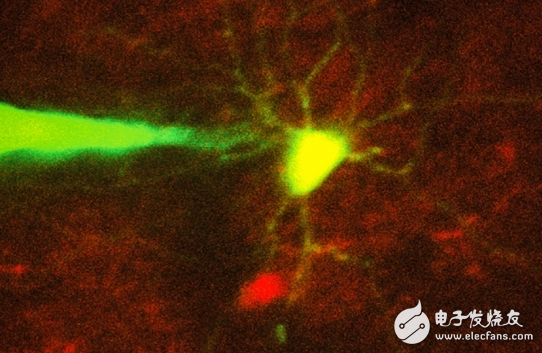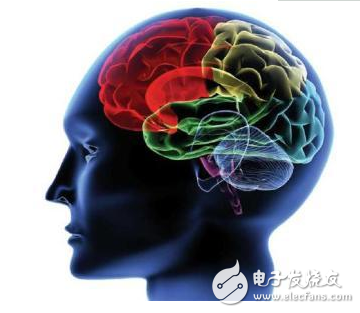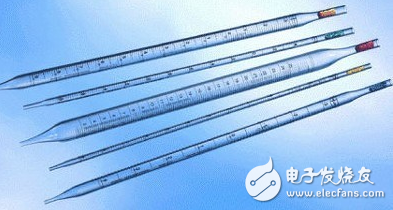Analyze the microscope image with an algorithm to achieve the research and analysis of the specific behavior of neurons
Recently, MIT's engineering team invented an automated method that uses computer algorithms to analyze microscopic images and direct "mechanical arms" onto target cells to enable the study and analysis of specific neuronal behavior.

It is understood that this technology allows more scientists to study a single neuron, and to understand how a single neuron interacts with other cells to achieve cognitive, sensory perception and other functions of the human brain. In addition, researchers can use this technology to understand how neural circuits are affected by brain disorders.
An associate professor at MIT Bioengineering explained: "Understanding the way neurons communicate is the foundation of basic and clinical neuroscience. When neurons are working or neurons are morbid, we hope that this technique will allow you to see intracellular What happened?"
PrecisionFor the past 30 years, neuroscientists have used a technique called "sticking" to record the potential activity of cells. The specific implementation of this technique is to use a tiny hollow glass tube to contact the cell membrane of the neuron, and then open a small hole in the membrane to observe. This technique usually requires a postgraduate or postdoctoral study and operation in a few months. Especially in mammalian brains, this technique will be more difficult to learn.
Previously, there were two types of "sticking" techniques. One was blind random selection. Because the researchers could not see the specific location of the cells, they could only record the location of each attempt to find the exact location of the cells. Another is to use image guidance, but the accuracy of the method is not high.

For 12 years, Boyden and his colleagues invented an automated patching method that they wrote a computer algorithm that directs a pipette to a cell based on a property called electrical impedance.
This method also shows how difficult it is to manually locate the cell position, because even with the algorithm, the computer is constantly trying and calculating to approximate the final position. The specific process is that if there are no cells around, the current will decrease, the impedance will decrease, and the tip will move. When the tip reaches a cell, the current will not flow, and the impedance will increase rapidly, so that the computer can quickly lock the tip. Cell location.
When the tip of the pipette is locked, it stops at the cell surface, and then the vacuum is used to create a closed space between the membrane and the tip by suction, and then the electrode that passes through the membrane records the potential activity inside the cell.

Although this technology has achieved high precision, it still cannot be used to lock specific target cells. In order to achieve precise directional operation, researchers began to try to complete the operation manually with automatic image guidance technology. However, it is worth noting that after the tip of the pipette enters the brain, the nearby cells will move automatically, so manual operation is very difficult.
Based on the combination with various imaging techniques, the researchers have also proposed an algorithm that moves the pipette to a target cell of approximately 25 microns. To achieve this higher accuracy, the system combines image technology with techniques that utilize impedance characteristics.
The researchers then used a two-photon microscope to image the cells, then used a pulsed laser to send the infrared light into the brain, brightening the cells designed to express the fluorescent protein for tracking and recognition.
Now, with this latest method, researchers can successfully target target cells with a success rate of 20%. This is comparable to the performance of trained scientists in manual operations.
to sum upWith the development of brain-computer interface technology and the continuous warming of biotechnology, this research method will become a key basic technology, paving the way for in-depth research on specific neuron behavior. In addition, letting computers or robots replace students and reducing the time spent on repeating work is a great improvement. At the same time, the computer recording of the study is also very convenient for sharing research, and to some extent, the integration of resources. The technology will also greatly promote research in the medical field on unsolved diseases such as Alzheimer's disease or schizophrenia.
Tobacco control has been a common global concern, while the traditional tobacco industry gradually, new tobacco has become the new strategic layout of tobacco giants. In this context, the emergence of e-cigarettes has further led to the replacement of traditional tobacco. At present, there are already a thousand different types of e-cigarettes, which have undergone several stages of development. The e-cigarette we are introducing today is the CBD pod systewm, a new type of e-cigarette. In this article we will combine the characteristics of the CBD with a brief analysis of it.
·Anti-anxiety
According to scientific studies,CBD can help depressed patients reduce their anxiety. The use of CBD can help maintain endogenous cannabinoids at a reasonable level, making the patient feel good and happy physically, and without any dependence.
·Anti-ageing
CBD is very powerful in anti-ageing. As a non-psychoactive component of the cannabis plant CBD inhibits the glutamate toxic response of cortical neurons and suppresses excessive oxidative stress, helping the body to achieve anti-ageing effects.
·Anti-inflammatory
CBD reduces the free radicals that cause neurodegenerative diseases and reduces swelling through its anti-inflammatory effects. In addition, CBD stimulates appetite and relieves pain.
China Disposble Vape Pen,E-Cigarette Cbd Vaporizer,Best Disposable Cbd Vape Pen,Disposable Cbd Vape
Shenzhen MASON VAP Technology Co., Ltd. , https://www.e-cigarettefactory.com